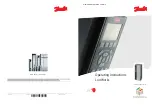
eu directive
vacon • 9
24-hour support: +358-(0)40-8371 150 • Email: [email protected]
2
2. EU
DIRECTIVE
2.1 CE
marking
The CE marking on the product guarantees the free movement of the product within the EEA
(European Economic Area). It also guarantees that the product complies with applicable directives
(for example, the EMC directive and other possible so-called new method directives).
Vacon NX inverters carry the CE label as a proof of compliance with the Low Voltage Directive (LVD)
and the Electro Magnetic Compatibility (EMC) directive.
has acted as the Competent
Body.
2.2 EMC
directive
2.2.1 Introduction
The EMC Directive provides that the electrical apparatus must not excessively disturb the
environment it is used in, and, on the other hand, it shall have an adequate level of immunity toward
other disturbances from the same environment.
The compliance of Vacon NX inverters with the EMC directive is verified with Technical Construction
Files (TCF) and checked and approved by SGS FIMKO, which is a
. The Technical
Construction Files are used to authenticate the conformity of Vacon inverters with the Directive
because it is impossible to test such a large product family in a laboratory environment and because
the combinations of installation vary greatly.
2.2.2 Technical
criteria
Our basic idea was to develop a range of inverters offering the best possible usability and cost-
efficiency. EMC compliance was a major consideration from the outset of the design.
2.2.3
Vacon inverter EMC classification
Factory delivered Vacon NX inverters are Class T equipment, which fulfil all EMC immunity
requirements (standards EN 50082-1, 50082-2 and EN 61800-3).
Class T:
Class T equipment have a small earth leakage current and can be used with floating DC input.
2.2.4
Manufacturer's declaration of conformity
The following page presents the photocopy of the Manufacturer's Declaration of Conformity assuring
the compliance of Vacon Inverters with the EMC-directives
Warning: This product is of the restricted sales distribution class according to IEC 61800-3. In
residential areas, this product may cause radio interference in which case the user may be required
to take adequate measures.










































